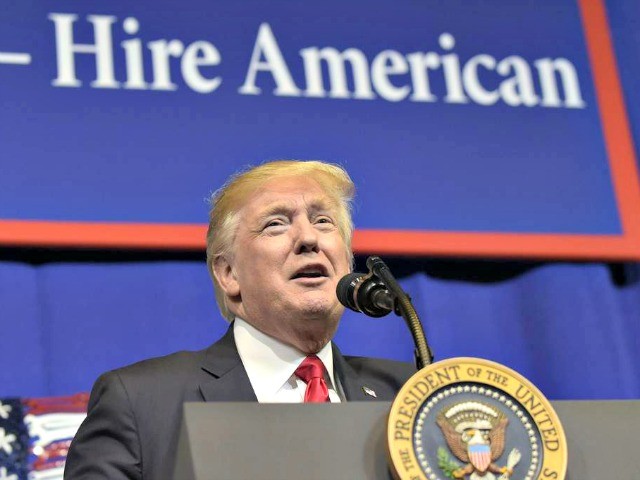
Americans who switched jobs gained wage increases of 4.6 percent in the 12 months up to January 2018, according to a report in Bloomberg News.
The 4.6 percent score is the biggest jump in ten years.
Bloomberg reported:
Median wage growth for those who jumped to new positions picked up to 4.6 percent in January from a year earlier, the fastest pace since October 2007, according to the Federal Reserve Bank of Atlanta’s Wage Growth Tracker. That compared with 3.4 percent [wage increaase] for those who haven’t switched jobs.
The 4.6 wage gain is offset by two percent inflation, so delivering a 2.6 percent real wage increase during the year to the Americans who switched jobs.
Americans who switch jobs include the workers who quit and then find a job, as well as the Americans who quit after accepting other employers’ wage offers.
The job switchers’ gains leaped in late 2018, from just a three percent gain in the fall to a 4.6 percent gain in January. The leap marks the highest wage gain for job switchers since late 2007, the peak of the housing bubble created by Congress and former President George W. Bush.
Rising wages are a big threat to investors because every extra million dollars spent on wages also tends to lower the company’s stock market value by roughly $15 million.
Tech Elites, Donor Class Unite with GOP/Dems to Outsource White-Collar American Jobshttps://t.co/xkjxF2dNss
— John Binder 👽 (@JxhnBinder) February 13, 2019
The rising wages help explain the increasingly frantic efforts by business to raise their labor supply via immigration.
Data show that increased legal immigration holds down Americans wages. In Minnesota, for example, wages rose by 5.2 percent during 2018 because migrants comprise only ten percent of the workforce. In Texas, migrants comprise 22 percent of the workforce, and so wages rose by only two percent in the state during 2018.
That business pressure for more imported workers is changing Trump’s rhetoric. On February 11, for example, Trump predicted he will deliver more foreign workers to U.S. companies:
Speaking of jobs, we have to have more people coming into our country because our real [unemployment] number is about 3.6 [percent], 3.7 [percent] … We need people. So we want to have people come into our country, but we want to have them come in through a merit system, and we want to have them come in legally. And that’s going to be happening.
If implemented, Trump’s promise of more foreign workers would reverse the popular “Hire American” policy he promised in his Inauguration Day speech.
Americans’ wages are rising because Trump’s Hire American policy forces companies to compete for the American and legal immigrant workers who are already in the United States and prevents them from recruiting additional foreign workers.
Pay rose three percent in the 12 months leading up to December 2018, according to the Bureau of Labor Statistics. The biggest national gains were around Minneapolis, likely boosting Trump’s 202o support in the battleground state.
Trump was a businessman and real estate developer whose business was fundamentally shaped by the supply and price of labor. However, Trump does not talk about how his “Hire American” policy is forcing companies to compete for labor by offering higher wages to voters — even though rising wages would help his reelection chances.
Business lobbies back the federal governments’ economic policy of using both legal and illegal migration to boost economic growth.
But that policy also shifts enormous wealth from young employees towards older investors by flooding the market with cheap white collar and blue collar foreign labor.
That annual inflow of roughly one million legal immigrants — as well as the population of two million visa workers and eight million working illegal immigrants — floods the labor market. The flood spikes profits and Wall Street values by shrinking salaries for 150 million blue-collar and white-collar employees, and especially wages for the four million young Americans who join the labor force each year.
The federal government’s cheap labor policy widens wealth gaps, reduces high tech investment, increases state and local tax burdens, hurts kids’ schools and college education, pushes Americans away from high tech careers, and sidelines millions of marginalized Americans, including many who are now struggling with fentanyl addictions.
Immigration also steers investment and wealth away from towns in Heartland states because coastal investors can more easily hire and supervise the large immigrant populations who prefer to live in coastal cities. In turn, that coastal investment flow drives up coastal real estate prices and pushes poor Americans, including Latinos and blacks, out of prosperous cities such as Berkeley and Oakland.
via Breitbart News
Enjoy this article? Read the full version at the authors website: https://www.breitbart.com
